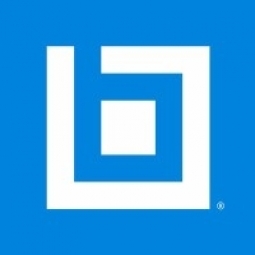Customer Company Size
SME
Region
- Europe
Country
- Switzerland
Product
- Bluebeam Revu
Tech Stack
- PDF data sets
- CAD software
- BIM software
Implementation Scale
- Enterprise-wide Deployment
Impact Metrics
- Productivity Improvements
- Cost Savings
- Environmental Impact Reduction
Technology Category
- Application Infrastructure & Middleware - Data Exchange & Integration
Applicable Industries
- Construction & Infrastructure
- Railway & Metro
Applicable Functions
- Discrete Manufacturing
Use Cases
- Digital Twin
- Remote Collaboration
Services
- Software Design & Engineering Services
- System Integration
About The Customer
Ribuna AG is a civil engineering and infrastructure company based in Interlaken, Switzerland. The company was established in early 2019 and has since handled a diverse range of projects, demonstrating the success and motivation of its young engineering team. Ribuna AG is committed to end-to-end digital planning and data management, viewing this as an important foundation for its operations. The company has worked with Nemetschek sister brand Allplan Engineering since its establishment and has a history with Bluebeam that goes back nearly as far. Ribuna AG is committed to using Bluebeam Revu in the long term, recognizing the importance of handling projects on a decentralized basis. The company has already had project partners working from home in various locations, and Bluebeam Revu has been instrumental in ensuring reliable planning, minimizing the amount of time spent on the project, and optimizing planning results.
The Challenge
Ribuna AG, a civil engineering and infrastructure company based in Interlaken, Switzerland, needed a solution for end-to-end digital planning and data management. The company had to quickly adapt to a decentralized approach due to the COVID-19 pandemic, which required teams to work from home. This was particularly crucial for the Oberried Station project on Lake Brienz, which started in the midst of the pandemic. The company sought a digital solution that would minimize errors and facilitate structured interaction at every planning and coordination stage. The solution also needed to be sustainable, reducing the use of paper and saving time.
The company identified that internal work processes, particularly with complex construction tasks and intricate project coordination, could waste huge amounts of time. Therefore, Ribuna decided to find digital tools that would make processes more efficient and help to minimize the potential for errors by optimizing and standardizing processes. The company also needed a tool that would optimize both internal processes and interaction with external project partners to create a proven planning and construction process that would be both transparent and reliable.
The Solution
Ribuna AG chose Bluebeam Revu as the solution for its digital planning and data management needs. The company had worked with Nemetschek sister brand Allplan Engineering since its establishment and quickly realized the potential of Bluebeam Revu. The software allows for connectivity between everyone involved in the planning process, enabling the creation of routines for crucial planning approvals from the client or specialist planners, tracking comments, and completing design reviews quickly and faultlessly. This results in a high level of security and transparency for the project coordinator and the team.
Bluebeam Revu also offers extensive functions for handling PDF data sets, which was a crucial factor in Ribuna's choice. The software allows the team to access, correct, and mark up project data and plans in real time, anytime and from anywhere, and return them to project partners. Permissions can also be amended flexibly right from the start of the planning process, ensuring that everyone who needs to receive information at a specific point in the project receives it right on time. The software also offers a range of tools for editing PDF data sets, making changes to plans, adding markups to the document itself, and emailing them to the relevant planning partners or linking them as information on a project platform used by everyone.
Bluebeam Revu also offers extensive functions for handling PDF data sets, which was a crucial factor in Ribuna's choice. The software allows the team to access, correct, and mark up project data and plans in real time, anytime and from anywhere, and return them to project partners. Permissions can also be amended flexibly right from the start of the planning process, ensuring that everyone who needs to receive information at a specific point in the project receives it right on time. The software also offers a range of tools for editing PDF data sets, making changes to plans, adding markups to the document itself, and emailing them to the relevant planning partners or linking them as information on a project platform used by everyone.
Operational Impact
Quantitative Benefit

Case Study missing?
Start adding your own!
Register with your work email and create a new case study profile for your business.
Related Case Studies.

Case Study
IoT System for Tunnel Construction
The Zenitaka Corporation ('Zenitaka') has two major business areas: its architectural business focuses on structures such as government buildings, office buildings, and commercial facilities, while its civil engineering business is targeted at structures such as tunnels, bridges and dams. Within these areas, there presented two issues that have always persisted in regard to the construction of mountain tunnels. These issues are 'improving safety" and "reducing energy consumption". Mountain tunnels construction requires a massive amount of electricity. This is because there are many kinds of electrical equipment being used day and night, including construction machinery, construction lighting, and ventilating fan. Despite this, the amount of power consumption is generally not tightly managed. In many cases, the exact amount of power consumption is only ascertained when the bill from the power company becomes available. Sometimes, corporations install demand-monitoring equipment to help curb the maximum power demanded. However, even in these cases, the devices only allow the total volume of power consumption to be ascertained, or they may issue warnings to prevent the contracted volume of power from being exceeded. In order to tackle the issue of reducing power consumption, it was first necessary to obtain an accurate breakdown of how much power was being used in each particular area. In other words, we needed to be able to visualize the amount of power being consumed. Safety, was also not being managed very rigorously. Even now, tunnel construction sites often use a 'name label' system for managing entry into the work site. Specifically, red labels with white reverse sides that bear the workers' names on both sides are displayed at the tunnel work site entrance. The workers themselves then flip the name label to the appropriate side when entering or exiting from the work site to indicate whether or not they are working inside the tunnel at any given time. If a worker forgets to flip his or her name label when entering or exiting from the tunnel, management cannot be performed effectively. In order to tackle the challenges mentioned above, Zenitaka decided to build a system that could improve the safety of tunnel construction as well as reduce the amount of power consumed. In other words, this new system would facilitate a clear picture of which workers were working in each location at the mountain tunnel construction site, as well as which processes were being carried out at those respective locations at any given time. The system would maintain the safety of all workers while also carefully controlling the electrical equipment to reduce unnecessary power consumption. Having decided on the concept, our next concern was whether there existed any kind of robust hardware that would not break down at the construction work site, that could move freely in response to changes in the working environment, and that could accurately detect workers and vehicles using radio frequency identification (RFID). Given that this system would involve many components that were new to Zenitaka, we decided to enlist the cooperation of E.I.Sol Co., Ltd. ('E.I.Sol') as our joint development partner, as they had provided us with a highly practical proposal.

Case Study
Splunk Partnership Ties Together Big Data & IoT Services
Splunk was faced with the need to meet emerging customer demands for interfacing IoT projects to its suite of services. The company required an IoT partner that would be able to easily and quickly integrate with its Splunk Enterprise platform, rather than allocating development resources and time to building out an IoT interface and application platform.

Case Study
Bridge monitoring in Hamburg Port
Kattwyk Bridge is used for both rail and road transport, and it has played an important role in the Port of Hamburg since 1973. However, the increasing pressure from traffic requires a monitoring solution. The goal of the project is to assess in real-time the bridge's status and dynamic responses to traffic and lift processes.

Case Study
Building Smart IoT-Connected Railways
• Difficult environment. Communications equipment on trains must function properly in harsh conditions, such as environment temperatures ranging from -25°C to +85°C, according to the EU standard EN50155.• Railway regulations. All products in a train must adhere to strict standards, relating to working vibration, power consumption, and lifetime.• Lengthy process. Time to market in the railway industry can take years from concept to mass production, so product design requires a solid long term vision.

Case Study
Bellas Landscaping
Leading landscaping firm serving central Illinois streamlines operations with Samsara’s real-time fleet tracking solution: • 30+ vehicle fleet includes International Terrastar dump trucks and flatbeds, medium- and light-duty pickups from Ford and Chevrolet. Winter fleet includes of snow plows and salters.








